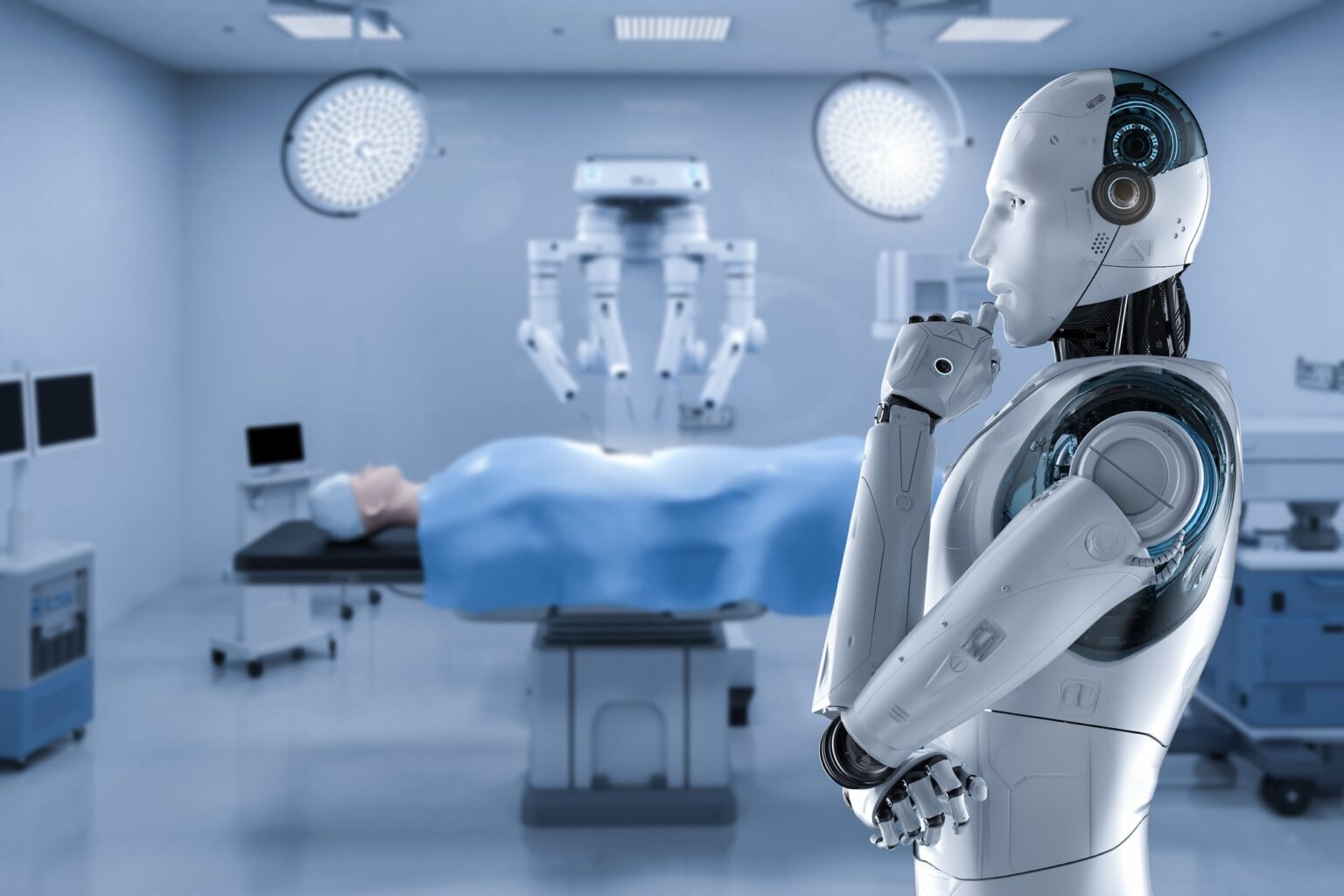Robotics in surgery has revolutionized the field by enabling advancements in minimally invasive procedures. Minimally invasive surgery (MIS), also known as robotic-assisted surgery or robot-assisted minimally invasive surgery, combines the precision and control of robotic technology with the skills of the surgeon to perform complex surgical procedures through small incisions. Here are key aspects of robotics in surgery and the advancements it brings to minimally invasive procedures:
- Enhanced Precision and Dexterity: Robotic surgical systems offer enhanced precision and dexterity compared to traditional surgical techniques. Surgeons can control robotic arms with high precision, allowing for precise movements in tight spaces and delicate procedures. The robotic instruments have a greater range of motion and can perform intricate maneuvers with enhanced stability, reducing the risk of human error.
- Improved Visualization: Robotic surgical systems provide surgeons with high-definition 3D visualization of the surgical site. The surgeon can view the magnified, high-resolution images on a console, providing a clear and detailed view of the area being operated. This enhanced visualization allows for better identification of anatomical structures, fine-tissue manipulation, and precise suturing.
- Teleoperation and Remote Surgery: Robotic surgery systems have the potential for teleoperation and remote surgery. This capability allows surgeons to perform procedures on patients located in remote areas, enabling access to specialized surgical expertise without the need for the surgeon to be physically present in the operating room. Teleoperation can also facilitate surgical training and mentorship opportunities.
- Reduced Trauma and Scarring: Minimally invasive procedures performed with robotic surgical systems typically involve smaller incisions compared to traditional open surgery. Smaller incisions result in reduced trauma to surrounding tissues, less post-operative pain, and faster recovery times for patients. Additionally, the cosmetic impact of smaller incisions leads to reduced scarring and improved patient satisfaction.
- Increased Surgical Accessibility: Robotic surgical systems offer increased accessibility to difficult-to-reach areas within the body. The flexibility and range of motion of robotic arms allow surgeons to access confined spaces or areas that are challenging to reach using traditional surgical instruments. This expanded reach enables surgeons to perform procedures that were previously deemed too complex or risky.
- Surgical Instrument Miniaturization: Robotic surgical instruments are designed to be highly precise and miniaturized, allowing for delicate and precise movements during surgery. These instruments can mimic the movements of the surgeon’s hand with greater articulation and reduced hand tremors. The miniaturized instruments, along with the robotic system’s enhanced control, enable surgeons to perform intricate procedures with improved accuracy.
- Real-time Feedback and Safety Features: Robotic surgical systems incorporate various safety features and feedback mechanisms to enhance surgical safety. Force feedback systems provide tactile feedback to the surgeon, allowing them to sense tissue resistance and make adjustments accordingly. Some systems also include motion scaling and tremor filtration, compensating for any hand tremors and translating movements into precise and stable actions.
- Faster Recovery and Shorter Hospital Stays: Minimally invasive robotic surgery often leads to faster patient recovery and shorter hospital stays compared to traditional open surgery. The reduced trauma to tissues, smaller incisions, and precise surgical techniques contribute to faster healing, reduced pain, and decreased risk of post-operative complications. Patients can often return to their normal activities sooner, improving their overall quality of life.
- Continued Technological Advancements: Robotic surgical systems are continuously evolving with advancements in technology. Innovations in robotic platforms, imaging, artificial intelligence, and machine learning are being integrated into surgical systems to enhance surgical capabilities, improve outcomes, and expand the range of procedures that can be performed using robotic-assisted techniques.
Robotics in surgery has transformed the landscape of minimally invasive procedures, offering numerous benefits to both surgeons and patients. As technology continues to advance, robotics will likely play an increasingly



